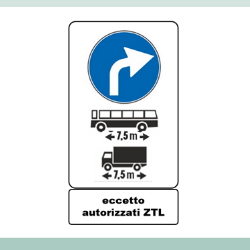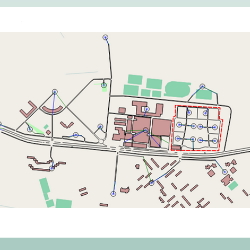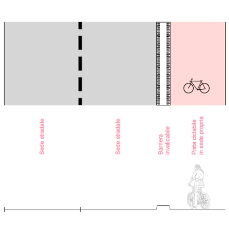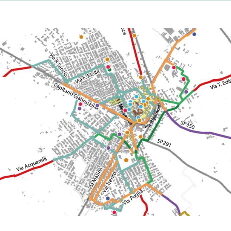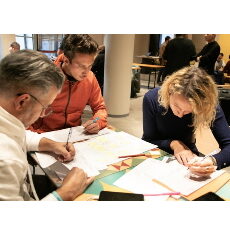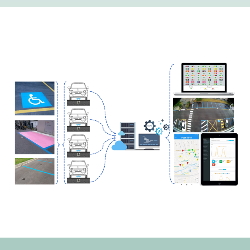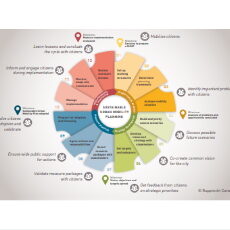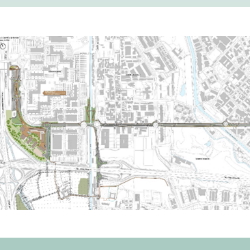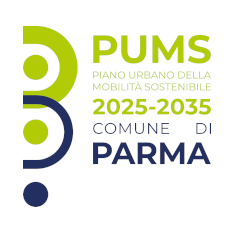- All
- African projects
- assessment
- assessment selected projects
- Assessment selected projects 2
- Assessment selected projects 3
- Assessment selected projects 4
- ASTRA
- Cost Benefit Analysis
- Electric mobility and ITS
- MOMOS
- planning
- planning selected projects
- planning selected projects 2
- planning selected projects 3
- planning selected projects 4
- planning selected projects 5
- projects
- Railways projects
- research
- research selected projects
- research selected projects 2
- research selected projects 3
- studies
- studies selected projects 1
- studies selected projects 2
- studies selected projects 3
- studies selected projects 4
- studies selected projects 5
- TRTingegneria
- TRUST
- urban mobility
- Support for the preliminary verification of a Limited Traffic Zone for heavy vehicles in Locorotondo The Municipality of Locorotondo (BA) has entrusted TRT Trasporti e Territorio with the support service for the definition and subsequent ministerial verification of a Limited Traffic Zone (ZTL) for heavy vehicles controlled by electronic gates and extended to the entire built-up area. The LTZ is aimed at strengthening controls with respect to the already existing ban on vehicles with a full load mass exceeding 3.5t, which obliges heavy vehicles to use the bypass route of the secondary suburban road “Giorgio Petrelli” under the jurisdiction of ANAS SpA and opened to traffic in 2011. The activities conducted by TRT involved the identification of the perimeter of the LTZ and the categories of vehicles subject to access restriction, the design of the warning and gate signage and its positioning, the definition of the temporal validity of the restrictions, the vehicles allowed and the procedures for issuing permits. Guidance was also provided with respect to the electronic control system and parking and loading and unloading areas. The definition of the LTZ was conducted in accordance with the ministerial guidelines on road traffic regulation and signage in limited traffic zones issued in 2019. TRT also provided assistance in the prior assessment phase by the General Directorate for Road Safety of the Ministry of Transport and ANAS SpA for the purpose of the subsequent formal authorisations.
- In-depth transport study of possible urban development related to ‘compartment c’ of the Unipol complex in via dei Missaglia TRT Trasporti e Territorio has been involved by UnipolSai for the technical and transport analysis concerning the feasibility of an independent access to serve the “Building C” area within the UnipolSai property along Via dei Missaglia in Milan. The study envisages the implementation of a dynamic traffic micro-simulation model in order to provide an assessment of the new road reorganisation within the Unipol complex. The simulations take into account the evolution of the occupancy of the buildings of the “Business Park” in the time horizon compatible with the development of the planned residential part. The analyses allow us to verify the impact of existing and future functions along Via dei Missaglia, the road system within the subdivision and at the main intersections.
- Cesena Sport City: network of cycling routes connecting sports areas in Cesena Following the victory in the design competition organized by the Municipality of Cesena in 2021, TRTIngegneria is developing a project for cycling connections as part of a broader activity to prepare the final and executive project, as well as safety coordination, aimed at the redevelopment of five sports areas. The project is named «Cesena Sport City». TRTIngegneria is working in partnership with Degli Esposti Architetti Srl (lead partner), CEAS Srl, various professional architects, engineers, and geologists (Elisa Cristiana Cattaneo, Angelo Bolzoni, Umberto Guerra, and Marcello Brugola), and benefits from the technical consultancy of GVG Engineering Srl. Specifically, TRTIngegneria’s activities involve defining and subsequently designing some cycling routes connecting the city center and the new sports hubs covered by the project. In the development of these activities, a methodology is adopted to emphasize and achieve: the construction of a cycling infrastructure based on the concept of a «city for diachronic sections», which means a timeline that can be traversed with slow mobility for daily commuting; strengthening the «Bicipolitana» and the «VeloCe» projects (as planned in the Cesena SUMP); weaving together internal molecular structures, redeveloping and enhancing existing routes, and implementing small actions through the construction of new sections that integrate existing elements; connecting with bike sharing and bike stop points in the project areas, creating small exchange hubs between motorists and cyclists. The use of roads as public spaces and the desire to establish a direct relationship between the city and the surrounding areas lead to proposing actions that aim to question and overturn the current car-pedestrian and car-cyclist hierarchy, reallocating space from parked cars to improve the usability of public spaces.
- Drafting of the Cycling Mobility Plan of the Municipality of Ugento (Salento), strategic vision to promote cycling for daily travel and for tourism The Municipal Administration of Ugento has entrusted “TRT Ingegneria” with the drafting of the Municipal Cycling Mobility Plan, after obtaining funding from the Puglia Region in 2021. The territory of Ugento is characterised by a strong vocation for tourism. This is due to the possibility of taking advantage of its numerous natural and environmental resources, including its marinas and parks, as well as the presence of a significant historical and cultural heritage. The primary public will for the area is to enhance and support the tourism system, and in this regard, cycling plays a particularly important role. Given the characteristics of the city of Ugento, the proposed bicycle network is developed by integrating the central urban area with the extensive network of existing suburban paths and white roads. This is done to define a complete active mobility network in the entire municipal territory that supports not only daily movements but also recreational and leisure trips. The Cycling Plan proposal considers as a starting point some references projects that involve the municipal territory at various levels. These are “La ciclovia dei Tre Mari”, the ongoing “Project for the construction of bicycle paths in the municipality of Ugento” and the proposal contained in the “Plan for the Ugento Litoral Regional Natural Park “. The plan elaboration was structured in two phases: The first phase, called “Cognitive framework and guidelines”, contains the analysis of the current state of cycling mobility in Ugento. It analyses the supply and demand of cycling routes and related services, as well as the social and environmental impacts. This document also contains the regulatory, planning and programming framework. The second phase, called “Drafting the Plan Document”, contains the definition of the objectives and strategies, as well as the description of the method used to identify priorities for action. The document presents the design of the cycle network, identifies services dedicated to cycling, and communication activities to encourage cycling. Finally, the document is completed by the investment cost estimation and the definition of the indicators for monitoring the planned actions. The Plan was adopted by the Municipal Council on 26.01.2023 and received the declaration of non-subjection to the Strategic Environmental Assessment (SEA) on 21.04.2023 by the competent Authority. On 05.07.2023, it was approved by the Municipal Council.
- TRT Academy – Professional training on cyclelogistics TRT Academy is born from the collaboration between TRT and EIT Urban Mobility. The Academy offers advanced training programs addressed to mobility and transport professionals to explore the specific issues required by the constant change of urban centres and related trips. In particular operators of the public and private sphere who intend to thrive the transition towards an increasingly sustainable mobility, understanding the economic, environmental and social aspects that this implies. The trainings combine theoretical learning, field visits and hands-on labs. The interdisciplinary group formed by TRT professionals offers the opportunity to comprehend processes and to strength skills through the application of practical cases and the meeting of guests from the sector also expanding the relationship and knowledge network. The training activity, initiated in the fall of 2022, has so far included four courses dedicated to cyclelogistics, a topic that has garnered the interest of numerous participants from logistics companies, administrations, service companies, and transport agencies. The courses aim to address the growing demand for sustainable and efficient last-mile logistics solutions. The challenges addressed include political, technical, knowledge-based, and trust-related aspects of the solution. With an interdisciplinary and innovative approach, the various editions of the course have offered different supply chain actors the opportunity to engage in discussions and identify elements to develop a shared public-private strategy. Following the success of the first edition held in Milan in November 2022, the course was offered again with specific focuses on the most current and relevant topics, in 2023 in Milan and Rome, and in June 2024 in Reggio Emilia. *This course was developed with the support of EIT Urban Mobility, an initiative of the European Union’s European Institute of Innovation and Technology (EIT). For more information: Bike Italia – Article Logistica Management – Article
- Evaluation of internal traffic access and parking in the areas of the major polyclinic hospital This study addresses issues related to the reorganisation and management of vehicles parking within the areas of the Ospedale Maggiore Policlinico in the city centre of Milan. The area, currently occupied by construction sites for the new buildings, is characterised by very limited parking spaces and it is affected by frequent phenomena of irregular parking that affect its proper and safe use for the various functions, particularly those related to emergencies. The study analyses in detail the current demand for mobility through: the administration of a questionnaire to employees concerning individual travel, analysis of vehicles and bicycle/pedestrian input/output flows from the area and an in-situ analysis campaign of the supply and demand for parking. Based on the solid reconstruction of the current state, innovative solutions were proposed with regard to parking management, through the implementation of an innovative access control and parking management system. This system is characterised by a high technological content based on the control of both access (through a number plate reading system) and individual parking spaces (through the installation of special sensors on the ground). The new system will be able to control both access and parking vehicles, allowing the automatic detection of any abuses in terms of access and parking. ]
- Formazione e Capacity Building per i Piani di Mobilità Urbana Sostenibile (PUMS) nei Paesi dell’UE TRT, supported by a consortium of six companies (DTV Consultants, TREDIT, TIS, Stratec, Goudappel, and Eurocities), has been appointed by the European Investment Bank (EIB) to provide SUMP Training and Capacity Building activities in multiple EU countries The primary goal of the project is to enhance the expertise of urban and regional transport planners, as well as newcomers, focusing on Sustainable Urban Mobility Plans (SUMPs) and offering centralized support for their implementation at the local and regional levels. The project entails a comprehensive program encompassing almost 30 training sessions and workshops in less than 2 years, covering SUMPs, National SUMP Support Programmes (NSSP), and Urban Mobility Indicators (UMI) monitoring and reporting mechanisms. The project aims to improve the technical and policy expertise of urban transport planners regarding SUMPs and facilitate their implementation at city or regional levels. It targets local training for TEN-T urban nodes, Cities Mission cities, and small/medium-sized EU cities, alongside capacity-building workshops to assist in establishing NSSPs at the national/regional levels. This initiative is crucial for implementing the Commission Recommendation on NSSPs, bridging capacity gaps in smaller cities, and ensuring national engagement and support. Aligned with the New EU Urban Mobility Framework, the training sessions focus on various SUMP aspects, including governance, legislation, funding, monitoring, evaluation, guidelines, methodology, education, and knowledge exchange through NSSPs. The training approach blends fundamental SUMP knowledge with the latest mobility, technology, and societal developments. The ultimate goal of the project is to strengthen SUMP implementation and governance across Europe by addressing key aspects of modern mobility planning, including monitoring tools, legal frameworks, and financial commitment, while tailoring activities based on Member States’ specific needs and interests. The SUMP training and NSSP workshops are delivered by 4 key experts: Tom Rye, Christiaan Kwantes, Kristina Gaučė, and Aljaž Plevnik. In addition, they are supported by a pool of Non-Key Experts with a vast experience in the different fields of the urban mobility domain. The SUMP trainings cover a wide range of topics: CORE MODULES Basics of SUMP methodology and practice The link between Strategic Plans, Programming, Pipeline and project preparation Urban nodes and the interface between local and strategic transport ELECTIVE MODULES Organisational and institutional aspects Multimodal plan scenario building in SUMPs Indicators, targets and monitoring Citizen/Stakeholder engagement and communication SUMPs for small and medium-sized cities Demand and Accessibility analysis through the SUMP Transport decarbonisation Environmental aspects Climate change adaptation and resilience Collective passenger transport Active modes and micromobility Freight and logistics Demand management Spatial planning Road safety and street design Inclusive and accessible mobility The NSSP workshops encompass several aspects, including the introduction of NSSP concepts, EC guidance, guest speakers, Q&A sessions, breakout group discussions, systemic barriers, national legislations, SUMP financial support, National SUMP platforms, SUMP guidance, and monitoring and evaluation at the national level. The first phase of the project lasted from September 2024 and was completed in June 2025, which saw the organisation of 12 training […]
- Integrated Planning Programme “PII1 -Milanofiori Sud” in the Municipality of Rozzano: Mobility Study The project addresses and offers solutions to the mobility impacts generated by the future development of the urban area PII1 – Milanofiori Sud in the Municipality of Rozzano (MI). TRT was part of the multidisciplinary team led by Policreo and Studio Nonis. TRT was involved in the definition of the mobility infrastructures and related impacts. The main activities carried out by TRT in the development of the area concerned: the selection of a suitable mobility scenario (transport and infrastructure), characterised by a strong connotation of sustainability; the development of a transport study that, through solid quantitative analyses and modelling simulations, defines the performance characteristics and accessibility level of the transport scheme selected for the area. TRT has actively contributed to the functional reorganisation of the M2 Assago-Milanofiori-Forum stop, which will represent a new multimodal interchange hub with an annexed cycle station equipped to serve intermodal users. TRT also supported the project team in defining the new cycle path that runs along Viale Gran San Bernardo – Viale Monte Amiata – Viale Isonzo and will connect the metro stop with the tram line 15 stop in Via Curiel. Related projects – City of Rozzano, mobility solutions for Città Nuova
- Update of the Sustainable Urban Mobility Plan (SUMP) of Parma (Italy) The Municipality of Parma has entrusted TRT Trasporti e Territorio with the update of the current Sustainable Urban Mobility Plan (SUMP) of the city, which has been in effect since March 2017 and was also drafted by TRT. The update of the SUMP is significant because: it references the EU guidelines developed within the Eltis project (latest version from 2019), as well as the Minister of Transport’s DM 397/2017 and 396/2019 «Guidelines for Sustainable Urban Mobility Plans», which were not yet issued at the time of the current SUMP; it follows the preparation of the «First Monitoring of the SUMP» (prepared by TRT and approved by the City Council in 2021), which assessed the ongoing achievement of objectives and targets set in the current SUMP; it takes place after the pandemic period (Covid-19), during and after which there have been significant changes in the mobility demand characteristics; moreover, important amendments have been introduced in the Road Code; it must be consistent and support the EU mission «100 climate-neutral and smart cities by 2030», to which the city of Parma has been admitted as one of the nine in Italy, with the goal of achieving climate neutrality by 2030. The activity will unfold in the following methodological steps: background analysis of the framework regarding the Parma’s mobility system and its impacts; analysis, processing, and synthesis of numerical information regarding mobility demand; evaluation of the current scenario (diagnostic framework) through a SWOT analysis; identification of strategies and alternative scenarios for the SUMP, as well as their detailed design; development of a participatory process to extend the sharing and acceptability of measures promoted by the future SUMP; evaluation of scenarios through the application of a multimodal transportation model (VISUM); estimation of investment and management costs for the Plan interventions, and finally design of monitoring activities. Regarding the participation activities, these will accompany different phases of SUMP development, involving citizens and stakeholders through public and thematic meetings, as well as the administration of an online survey directed at the entire community. Related projects: TRT was commissioned in 2019 to coordinate the implementation and monitoring of Parma’s SUMP and was also responsible of the drafting of the General Urban Traffic Plan of the city of Parma. TRT was also responsible of the drafting of the previuos Sustainable Urban Mobility Plan.

